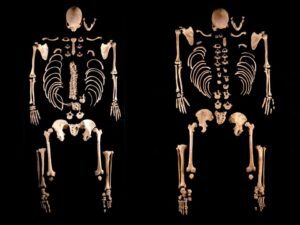
Using ancient DNA recovered from over 270 Iberians representing an unprecedented timespan, researchers including David Reich have pieced together an 8,000-year-long genetic history of the Iberian Peninsula. In addition to revealing key events that shaped Iberia’s ancient populations, the study also demonstrates the potential for high-resolution ancient DNA records that extend from prehistoric to the present to provide detailed information about the formation of a region’s contemporary populations. The study of ancient DNA provides a glimpse into the movements and migrations of ancient peoples as evidenced by the genetic legacies left behind. The Iberian Peninsula, the region encompassing what is now Spain and Portugal, is situated between North Africa, Europe and the Mediterranean. With its long history of interaction with surrounding regions, Iberia provides an ideal opportunity to study the genetic impact of migrations into the European continent from the eastern Mediterranean and North Africa, according to the authors. Iñigo Olalde and colleagues assembled genome-wide data from 271 ancient Iberians, from locations throughout Spain, to create a comprehensive chronology of gene flow into and throughout the region spanning nearly 8,000 years. Olalde et al.extracted the ancient DNA from archaeological human remains previously recovered from a variety of contexts – including a pair of brothers interred together in a mountain-side cave nearly 7,000 years ago. According to the results of their various analyses, the population structure of the region’s Mesolithic hunter-gatherers was much more complex than previously thought. The authors also unexpectedly identified early, albeit limited, interaction with North Africa by approximately 2,500 BCE. The results further revealed the tremendous impact of immigrations of people from the Pontic-Caspian steppe to the east; by about 2,000 BCE, nearly 40% of Iberia’s ancestry and nearly 100% of the local male population was replaced by people with Steppe ancestry. Interestingly, genetic data combined with linguistics reveal that present-day Basques, who show a large amount of Steppe ancestry, lack evidence of the later admixture events that shaped the rest of Iberia. In a related Perspective, Marc Vander Linden discusses the contentious role of genetics-based methodologies in archaeological research and offers transdisciplinary suggestions on how it can be best implemented. “Like any other revolution, ancient DNA’s legacy will not only be measured in light of technological developments, but by its ability to generate meaningful results, including but not limited to admixture events as those documented by Olalde et al.,” writes Linden.
_________________________________________

La Braña 1 and 2 Mesolithic hunter-gatherers (Leon, Spain), found to be brothers. Julio Manuel Vidal Encinas
_________________________________________
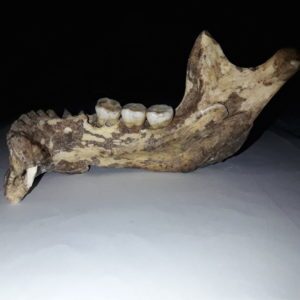
Cariguela Mesolithic mandible, arguably the oldest remain with DNA from Southern Iberia. Archivo fotografico Museo Arqueol6gico de Granada
_________________________________________
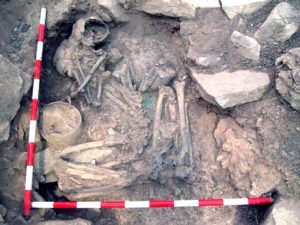
A burial (male with steppe ancestry and female without) illustrating the Bronze Age turnover. Luis Benitez de Lugo Enrich – Jose Luis Fuentes Sanchez (Oppida)
________________________________________
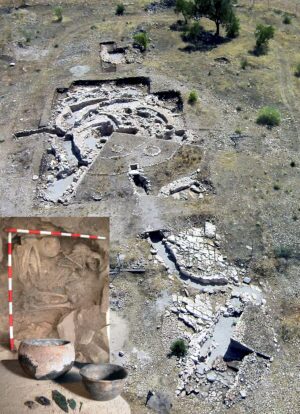
A site from Ciudad Real with contemporaneous people with and without steppe ancestry. Luis Benitez de Lugo Enrich – Jose Luis Fuentes Sanchez (Oppida)
_________________________________________
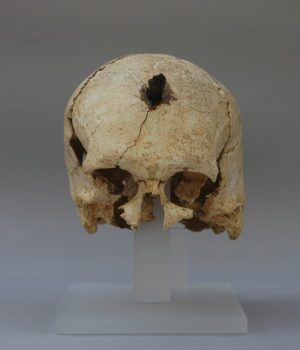
Some of the Iberian individuals studied come from heads being nailed to house fronts. Credit: Archivo Museu d’Arqueologia de Catalunya
_________________________________________
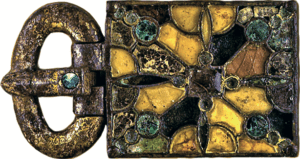
Grave good in a Visigothic burial with Eastern European affinities and Asian mtDNA lineage. Universitat de Girona
_________________________________________
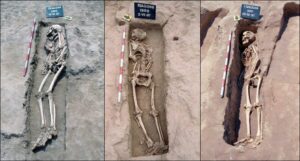
lslamic burials from Valencia; the bodies are facing South, where Mecca was supposed to be. Guillermo Pascual Berlanga
_________________________________________
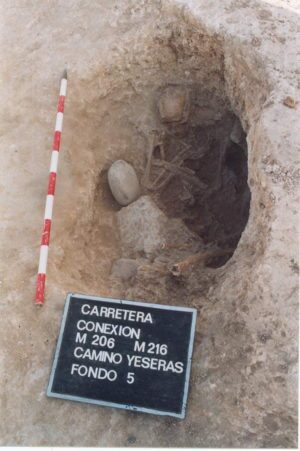
Copper Age male (I4246) from Camino de las Yeseras (Madrid, Spain) with North African origin. Miguel Rodriguez Cifuentes
_________________________________________
This research appears in the 15 March 2019 issue of Science.
Article Source: Science news release. Science is published by AAAS, the nonprofit science society.




